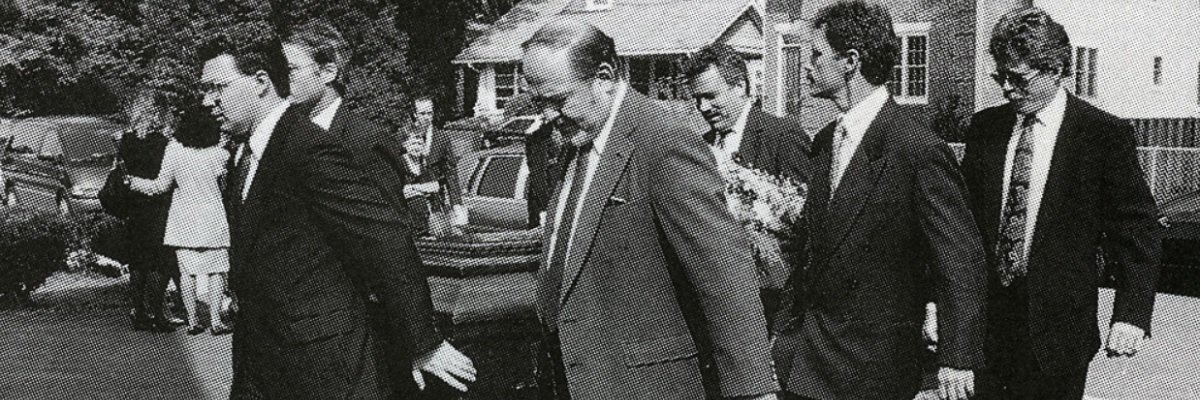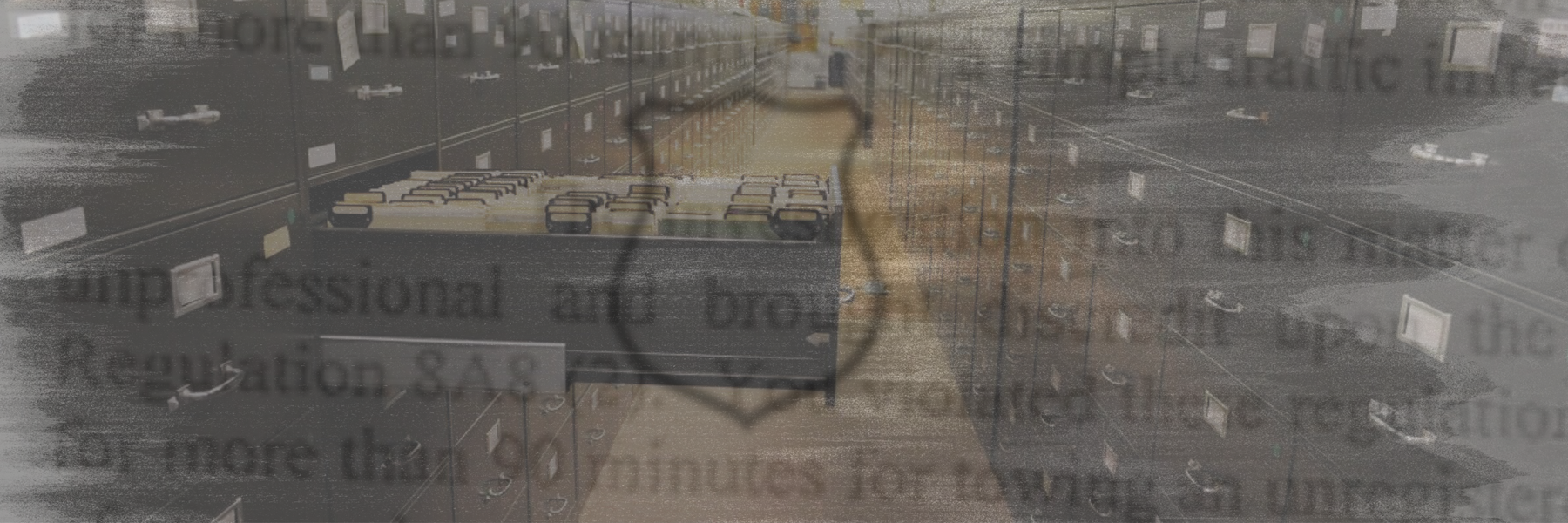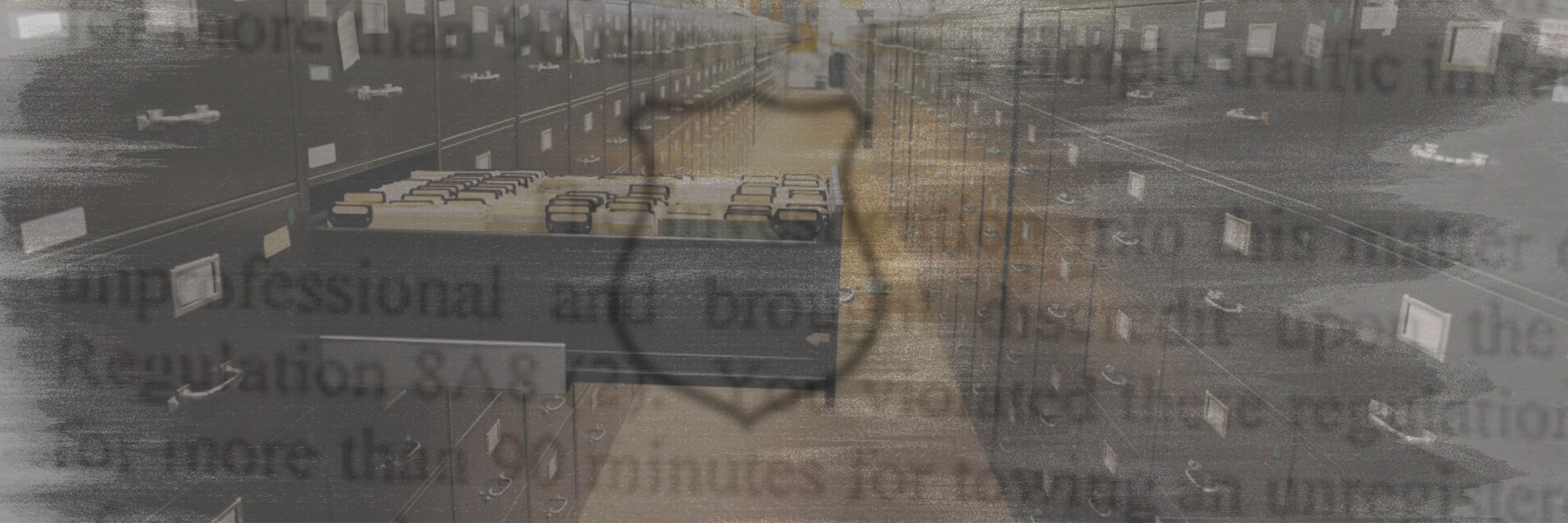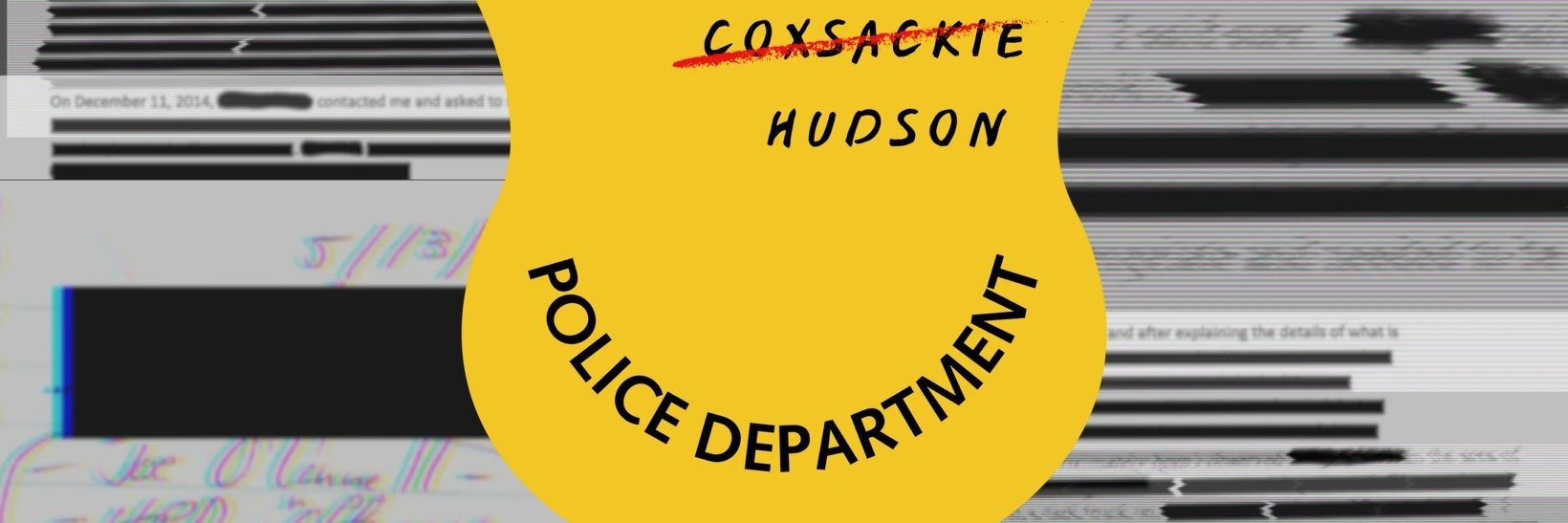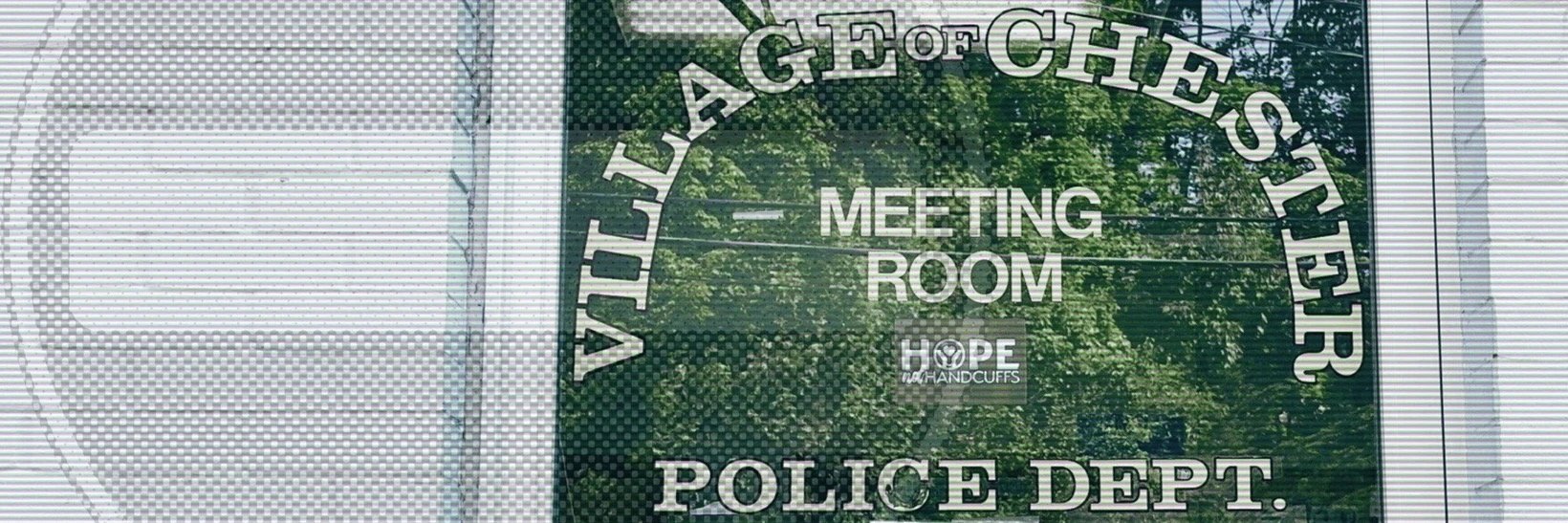The official version of events surrounding Danny Casolaro’s death has been questioned since the beginning, but several recent revelations resulting from the release of government documents have undermined it. While there are still questions about Casolaro’s death, there are over a dozen reasons to doubt the official conclusions.
For more information on the Inslaw/PROMIS affair that Casolaro was researching before his death - more colorfully known as the “The Octopus” - start here.
1. Police tainted expert witness with leading video and withholding evidence
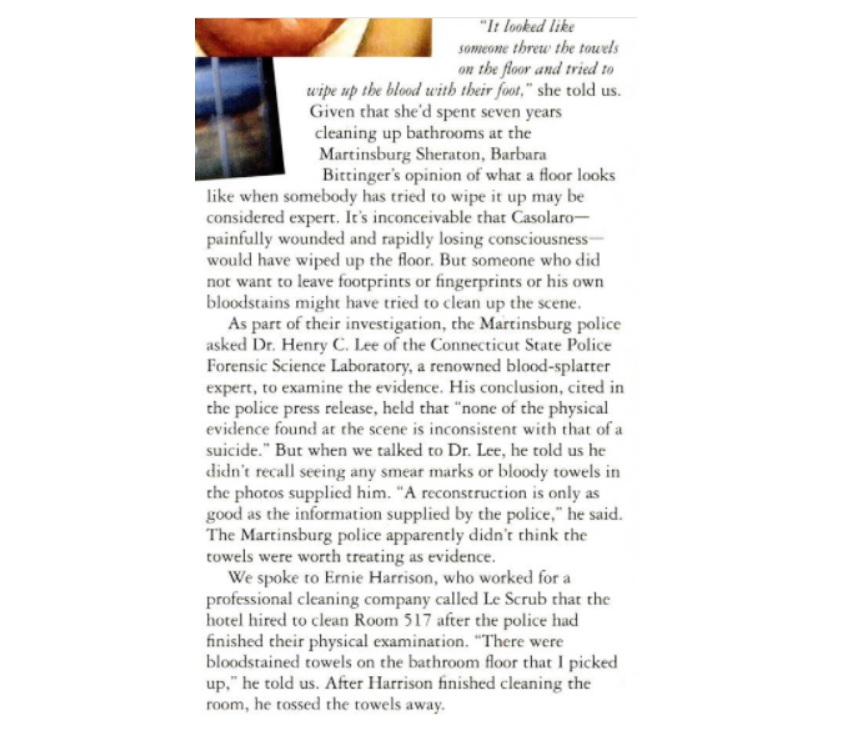
The claims of suicide typically cite the findings of the expert witness, Dr. Henry Lee, who had concluded that the scene and the evidence was all consistent with suicide. This finding was based in part off of a video “reenactment” of Casolaro’s death which the Federal Bureau of Investigation refuses to release a copy of, without citing a FOIA exemption. The same police force was later found to have withheld critical evidence from the expert witness - the presence of towels that had been used to wipe up blood at the scene. The towels were thrown away. Read more here.
2. The disappearing briefcase

Just before his death, Casolaro had a briefcase full of documents and notes. When his body was found, the briefcase was gone. At best, this indicates someone secretly found his body and removed the notes. At worst, it means someone else was there when he died. Read more here.
3. Bua Report lied about a witness’s existence

The Justice Department’s Bua Report, which dismissed Casolaro’s death as a suicide, not only failed to disclose one of the witnesses who saw the briefcase just before Casolaro’s death, it falsely stated that the police found only one person who thought they’d seen the briefcase. A review of the handwritten police notes proves this wrong, as a second witness very clearly states that they saw, without doubt, a briefcase full of papers shortly before Casolaro died. The DOJ had these notes sealed. Read more here.
4. Bua Report lied about a witness hearing threats
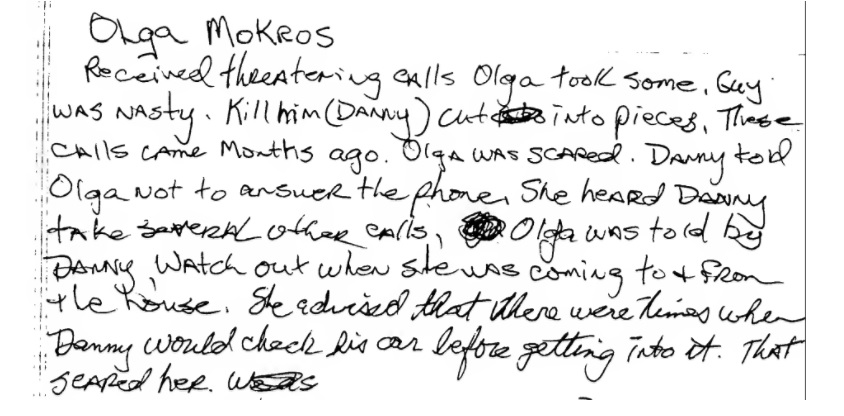
The Bua Report lied when and how often a witness heard threats against Casolaro. Read more here.
5. FBI lied to Congress

When Congress asked the FBI about Casolaro’s death, the FBI responded with a claim that they hadn’t looked into it. This was a lie. Read more here.
6. FBI pressured agents to conclude suicide

More than half the FBI agents that did look into Casolaro’s death “questioned the conclusion of suicide” and recommended further investigation, despite being aware that this was a threat to their careers. Read more here.
7. 90 percent of the FBI file has gone missing

The FBI and DOJ can’t seem to agree about the status of the file on Casolaro, with the DOJ claiming that more than 90 percent of it has gone missing. Read more here.
8. Chief suspect threatened Casolaro
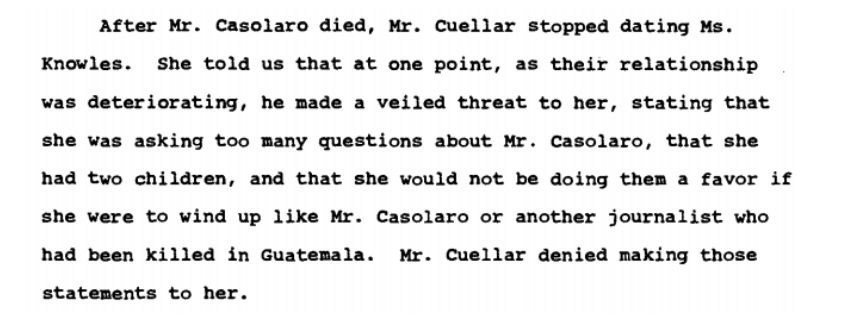
According to his ex-girlfriend, the chief suspect in Casolaro’s death, Joseph Cuellar, had previously threatened Casolaro. Read more here.
9. DOJ ignored chief suspect’s contradictory alibis

The chief suspect gave the DOJ two irreconcilable alibis for Casolaro’s death. The DOJ ignored one of the alibis. Read more here.
10. Chief suspect’s final alibi isn’t an alibi
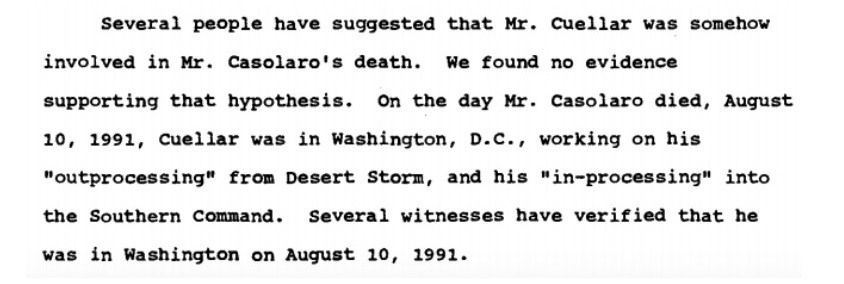
The timeline of the chief alibi’s suspect that the DOJ decided to publicize doesn’t actually provide him with an alibi for Casolaro’s death. Read more here.
11. FBI said local police were uncooperative
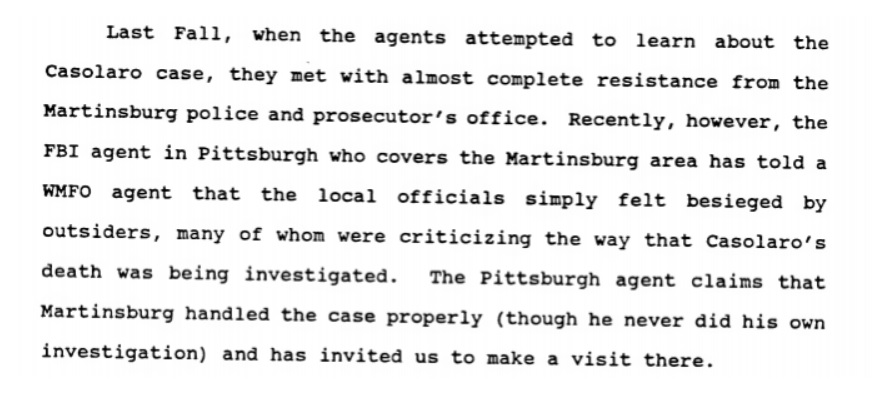
When the FBI attempted to look into Casolaro’s death, they were met with “almost complete resistance from the Martinsburg police and prosecutor’s office.” Read more here.
12. FBI said DOJ was uncooperative, withheld unredacted Bua Report
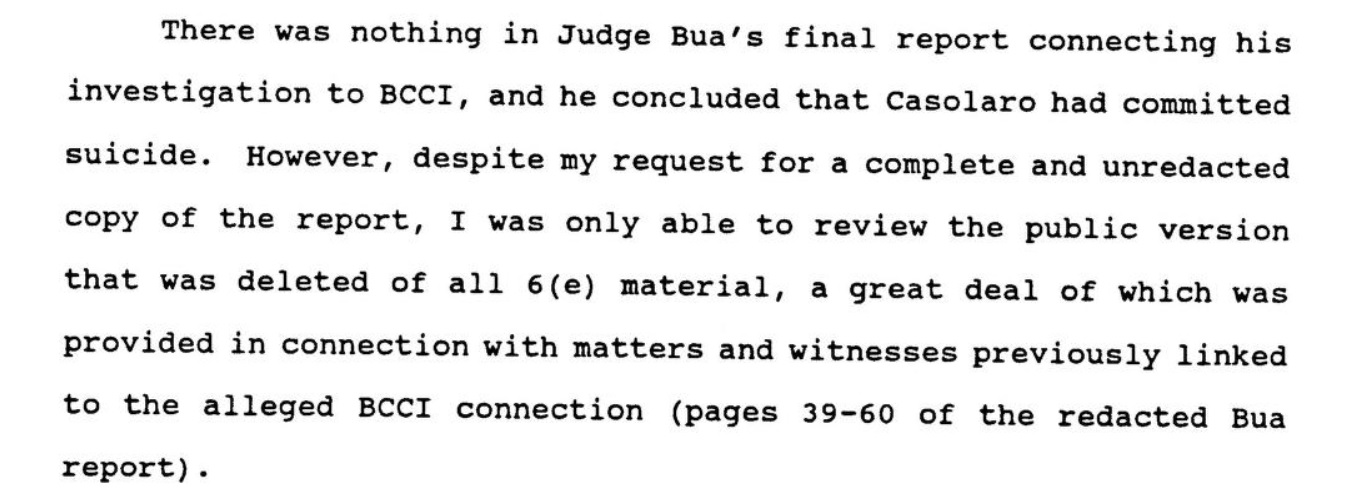
When an FBI Task Force requested a copy of the unredacted Bua Report from the DOJ, they were denied access to it, including the information most relevant to their investigation. No explanation appears to have been provided. Read more here.
13. There was an unreported wiretap

Exemptions cited for withholding materials implies there was an undisclosed wiretap in the Casolaro investigation. Read more here.
In short, the investigation was incomplete, with evidence being both withheld and fabricated. The FBI was under pressure to conclude that it was a suicide, but still questioned that. Both the police and the DOJ were uncooperative. Multiple lies were told. The chief suspect lied about his alibi, and ultimately doesn’t have one that holds up. What, exactly, happened to Casolaro is still something of a mystery - but there are over a dozen reasons why the official investigation and the resulting explanation don’t - and can’t - answer the questions around his suicide.
Like Emma Best’s work? Support her on Patreon.
Image via People of the Black Circle
